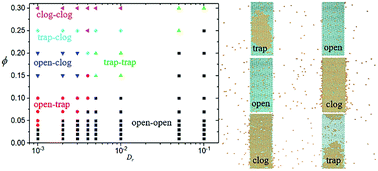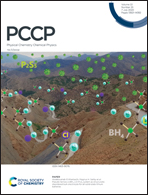Transport of self-propelled particles across a porous medium: trapping, clogging, and the Matthew effect
Abstract
We study the transport of self-propelled particles from one free chamber to another across two stripe-like areas of dense porous medium. The medium is mimicked by arrays of obstacles. We find that active motion could greatly speed up the transport of particles. However, more and more particles become trapped in the obstacle arrays with the enhancement of activity. At high persistence (low rotational diffusion rate) and moderate particle concentration, we observe the Matthew effect in the aggregation of particles in the two obstacle arrays. This effect is weakened by introduction of randomness or deformability into the obstacle arrays. Moreover, the dependence on deformability shows the characteristics of first-order phase transition. In rare situations, the system could be stuck in a dynamic unstable state, e.g. the particles alternatively gather more in one of the two obstacle arrays, exhibiting oscillation of particle number between the arrays. Our results reveal new features in the transport of active objects in a complex medium and have implications for manipulating their collective assembly.

- This article is part of the themed collection: 2020 PCCP HOT Articles


 Please wait while we load your content...
Please wait while we load your content...